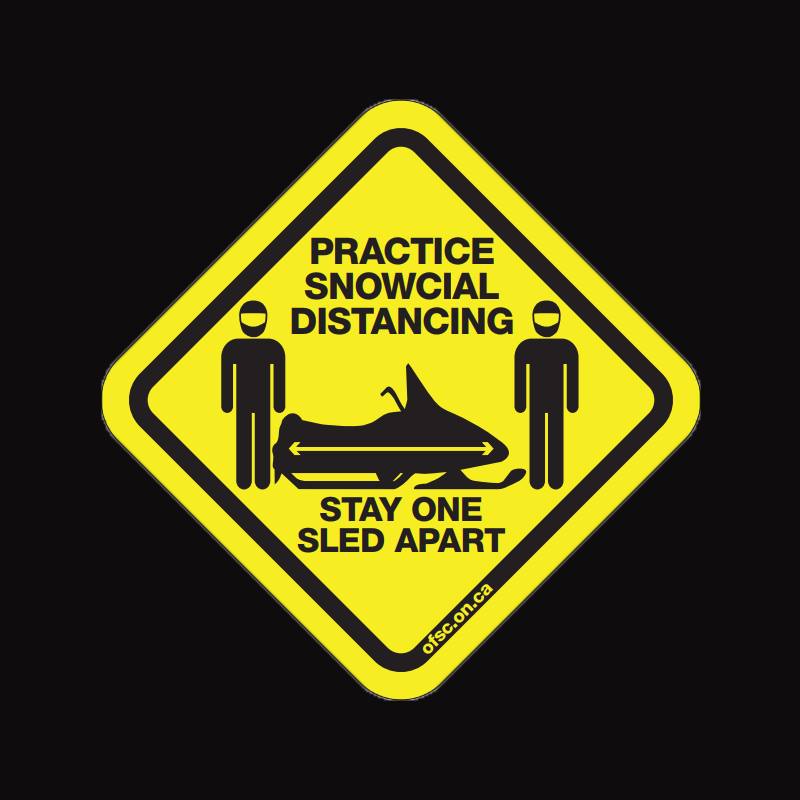How To Adapt Your Plans & Rides To New Sledding Realities For The Coming Winter…
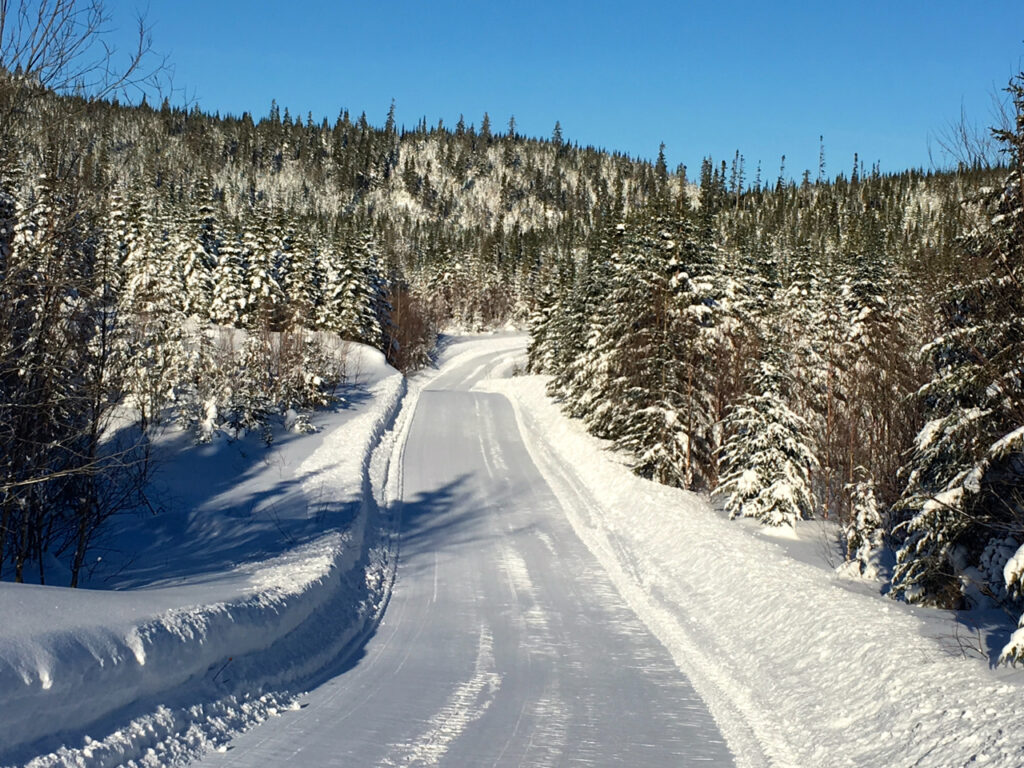
Photo © by Craig Nicholson
Related: Staying Warm This Winter
Our world has undergone a surprising paradigm shift this year, and that’s why we need 2021 snowmobile trail riding tips!
While many trails will be open, snowmobilers can anticipate a very different kind of riding experience this winter. There will be numerous new challenges as things continue to evolve. What’s more, our ride planning could always involve trying to deal with moving targets like these…
Ontario State of Emergency Stay At Home Order To February 10
“The Government of Ontario on the advice of the Chief Medical Officer of Health, advised all Ontarians to stay home with trips outside the home limited to necessities such as food, medication, medical appointments, or supporting vulnerable community members.”
“Many businesses throughout the province will be faced with restrictions throughout the shutdown, including restaurants and bars, which will once again be limited to only take-out and delivery operations.” This means that snowmobilers may not have normal access to food services along the trails and should plan accordingly, including new restrictions on hotel and motel operations.
“All unattended buildings and washrooms (including outhouses and warm up shelters) on the trails will be closed with no access to riders.”
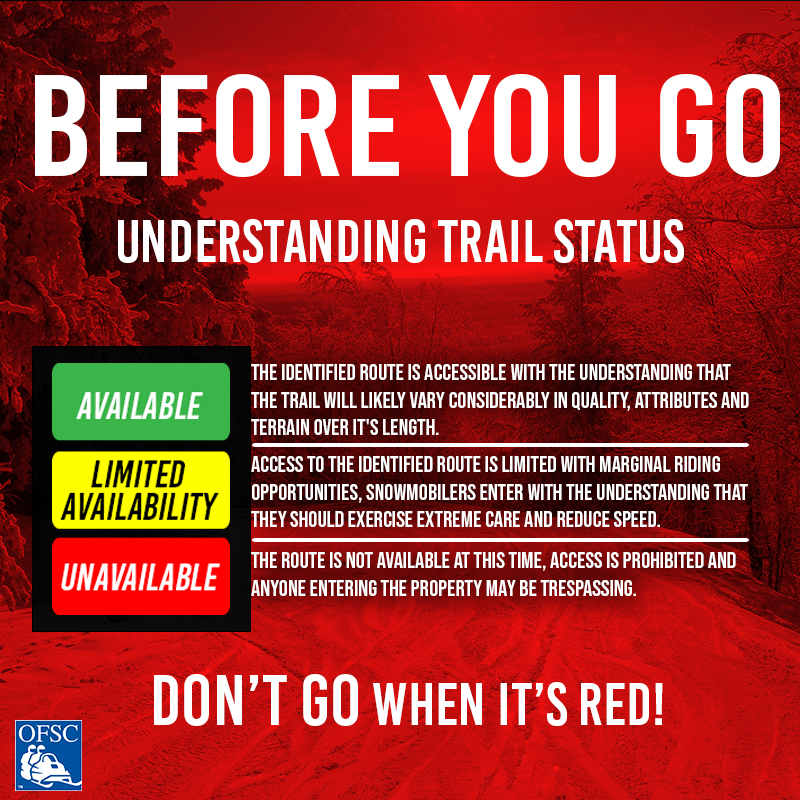
Given that physical activity is an important part of staying healthy, today’s announcement by the Government of Ontario stated that “trails servicing snowmobiles will be allowed to remain open.” This allows the OFSC to proceed with trail and grooming operations, and also means that OFSC trails can open in accordance with all public health guidelines. With any luck, some restrictions may have lifted during the winter. But how we handle our rides still may not look the same.
I guess many other riders are also coming to this realization. At least judging by the increasing frequency of social media comments and questions I’m seeing. Riders are also beginning to wonder about what will or won’t be open this winter. Lots of speculation out there. Unfortunately, not a lot of definitive answers. That’s because no one really knows what will happen. But that won’t stop me adding my two-cents worth about 2021 snowmobile trail riding!
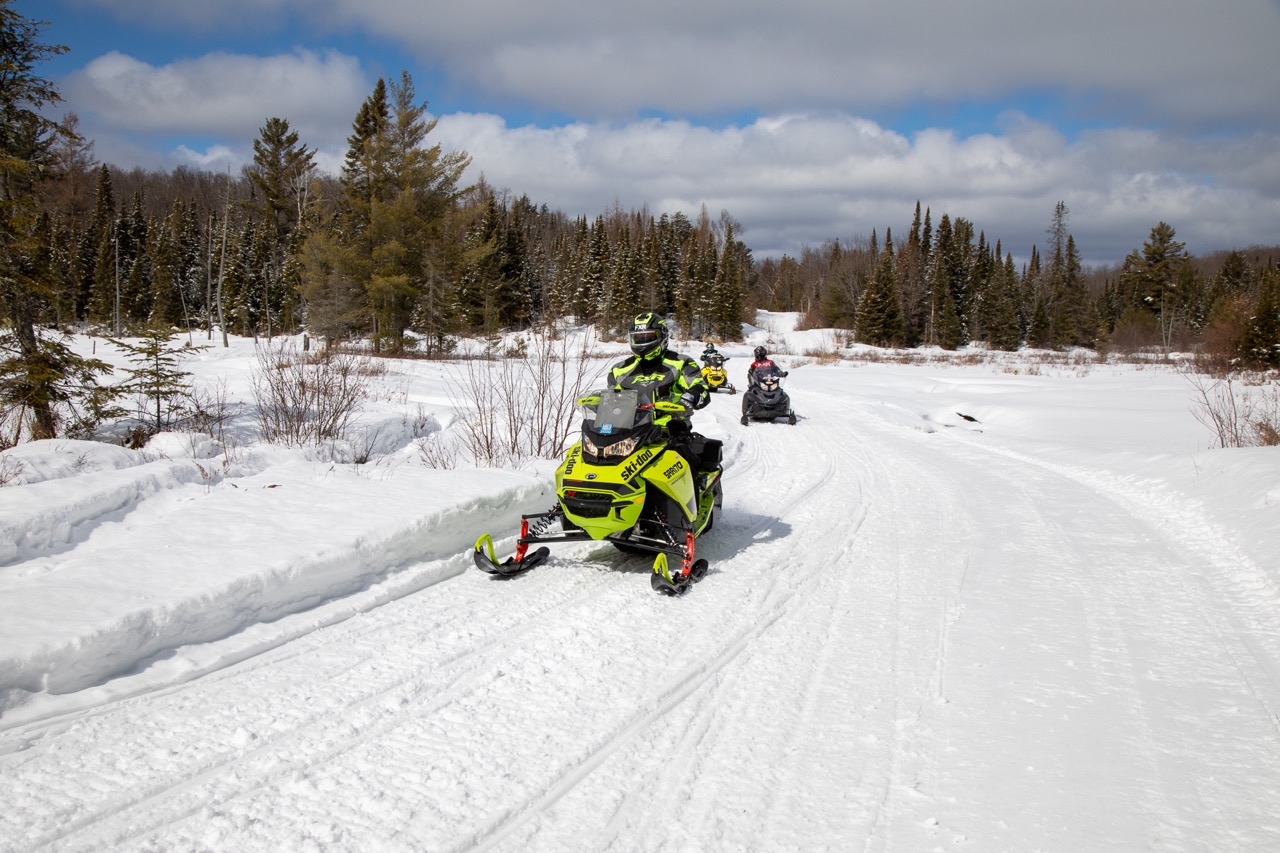
Photo by Martin Lortz
My Trail Riding Expectations This Season
My rule this season will be not to assume anything will be the same as it was. Or take anything for granted. I’ll always plan ahead and double check before going. I suspect that I’ll have to revise many of my best laid plans at the last minute or even on route. Preparedness, flexibility, adaptability and personal responsibility will be my watchwords on the snow for 2021. Frankly, I’ll just be happy to get in whatever local trail riding I can find!
Are Your 2021 Snowmobile Trail Riding Plans Realistic?
Sure, taking weather & snow conditions into account is already a fact of our snowmobiling life. But let’s face it. This winter, we also have to contend with unprecedented virus-related uncertainties when we want to go. What regions have no restrictions? What trails are available this week? Are services open and when? Where do we get gas? What health & safety precautions do trailside businesses and communities expect from us?
The list of questions for 2021 snowmobile trail riding goes on. Their answers will often determine where we can go at any given time. And how far we can ride each day. Meanwhile, here are some more factors to consider…
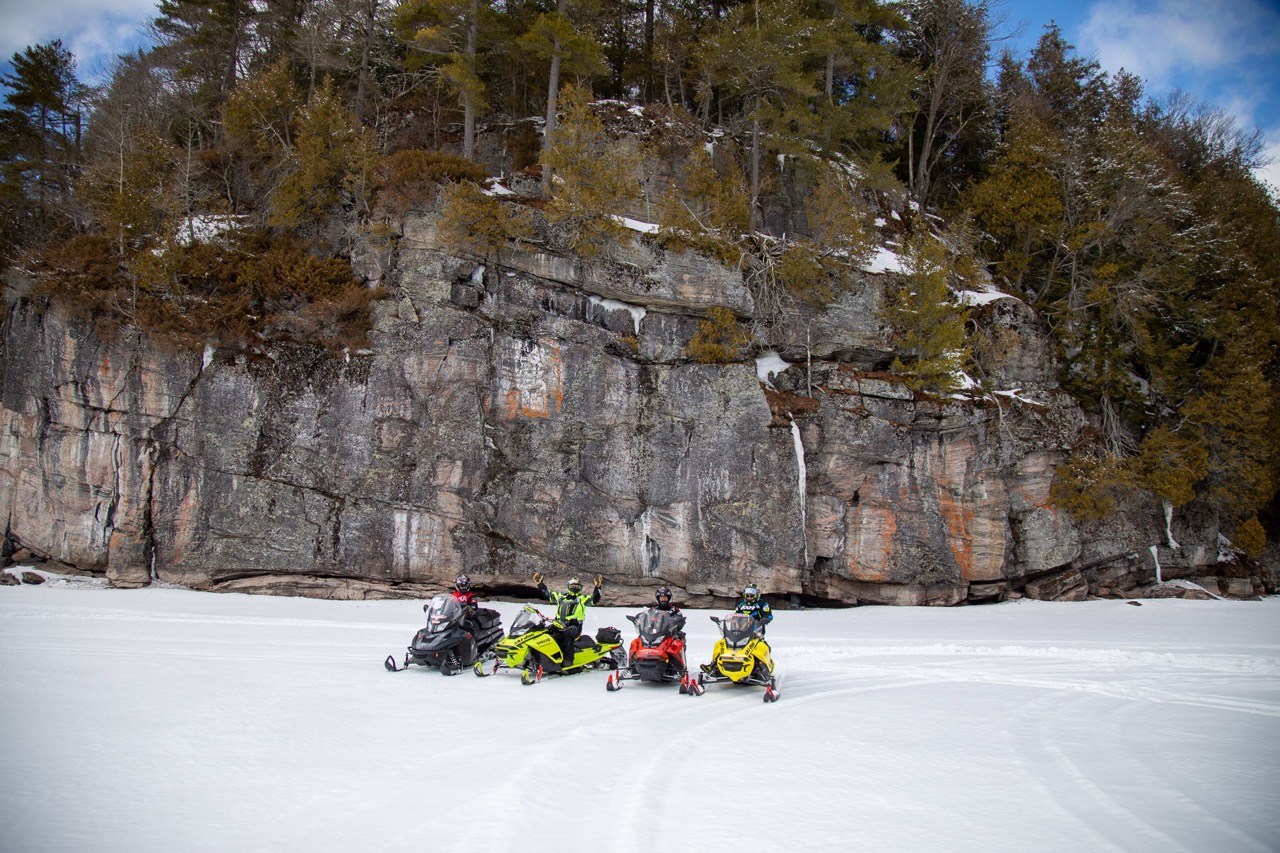
Photo by Martin Lortz
Who Are We Riding With?
Let’s start with our companions for 2021 snowmobile trail riding after travel restrictions end. Ask yourself, who will I be comfortable riding with? Those of us who take virus precautions seriously will likely want to ride with like-minded and equally careful individuals. Even as we have lived in anti-virus bubbles at home for many months, what about forming a riding bubble with these folks? These regular companions might be the most comfortable and healthy way to achieve our 2021 snowmobile trail riding expectations this winter.
Who Are We Trailering With?
Before we ride, we’ve got to get to the snow. For many, that involves trailering, typically with 2 to 4 sleds on board. So now how do we handle sitting in an enclosed tow vehicle close to others for hours? Even if they are part of our riding bubble, proximity in a truck is about as risky at its gets for all involved. Do we load the sleds in one trailer (maintaining physical distancing) and then drive in separate vehicles? I’m inclined to trailer on my own or only with members of my household. And what if one guy gets sick along the way? Who really wants to drive him all the way home in a sealed compartment!
What’s The Plan?
Meanwhile, definitive ride planning may not be possible for our 2021 snowmobile trail riding expectations. I suggest that we’ll have more luck picking a time to go than finalizing a destination. So as previously, a group of riders should still be able to decide in advance what dates and how many days to be away.
But now, finalizing their “where to go” decision may be more difficult. It may well come down to a last minute choice among several possibilities. And then choosing the one that appears to be the most ride-ready.
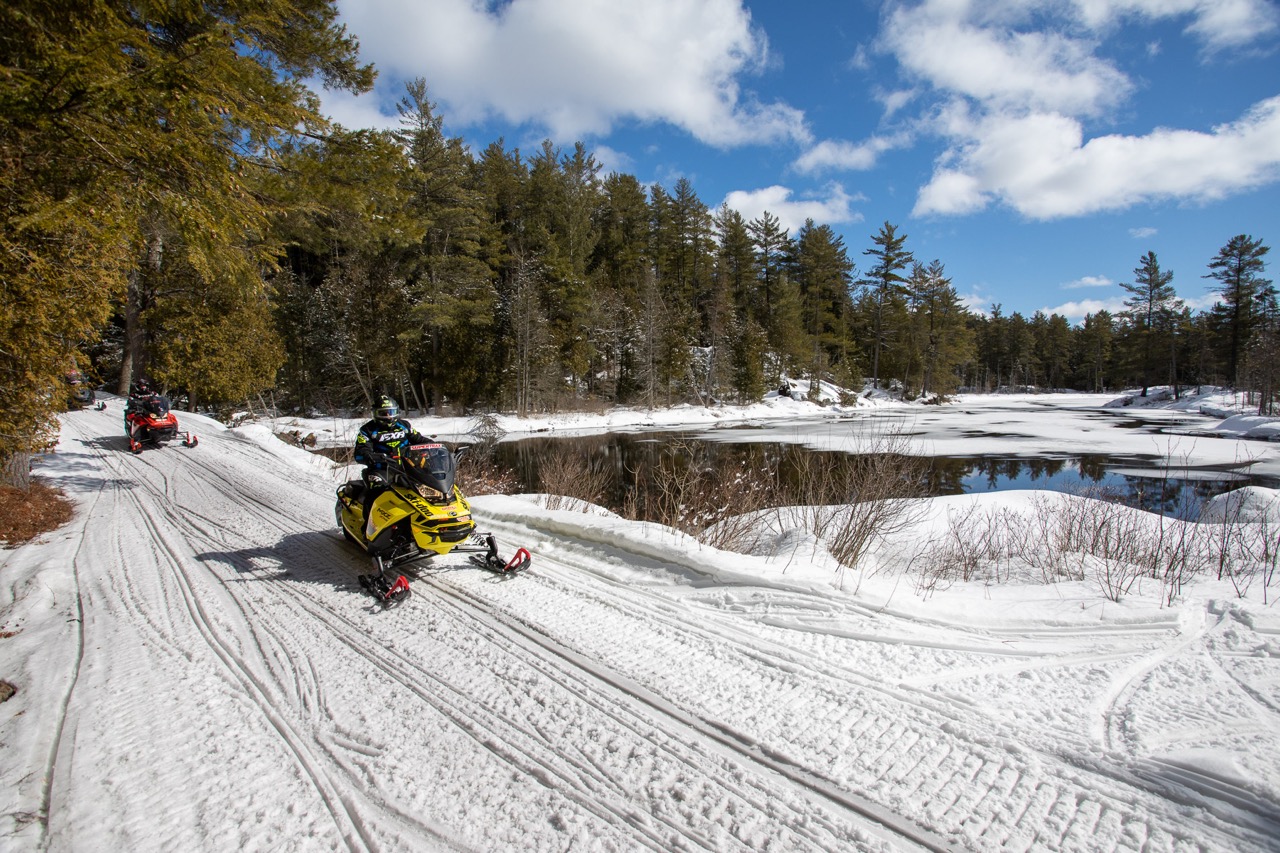
Photo by Martin Lortz
What Will Our 2021 Snowmobile Trail Riding Look Like?
That may mean developing several different itineraries in advance. And then selecting the one with the least limitations or restrictions only a short time before leaving home. This choice will likely involve double-checking what trails are good to go. In Ontario, this means going to the Interactive Trail Guide provided by the Ontario Federation of Snowmobile Clubs. Also, starting to call ahead to confirm what services are still open and what health or capacity limitation measures may be in place.
My guess is that in some cases, the distances we can cover on any given day may be reduced. This cutback in 2021 snowmobile trail riding expectations could result from possible trail re-routes. Or from longer waits for lunch and fuel on route. Or the unavailability of overnight lodgings. Plus, there is always the possibility of temporary regional restrictions imposed by some public health units. That’s why it will always be smart to check ahead each evening to verify that your itinerary can still be done as anticipated.
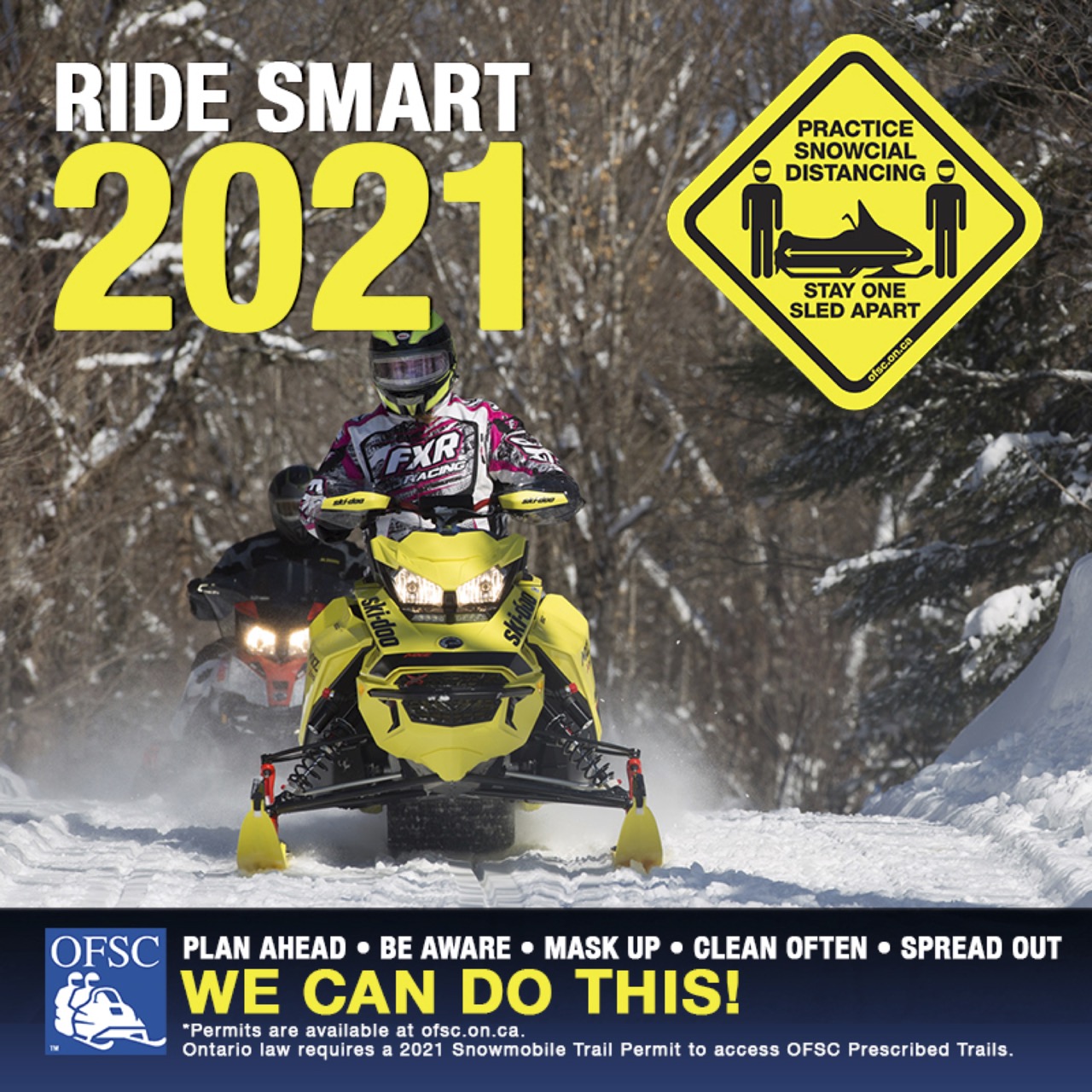
What Kind of Riding?
Unless things change dramatically for the better, this will be the winter of day riding for me. My trail riding expectations are no saddle-bagging from one destination to another over multiple days this season. Too many uncertainties and variables.
For example, what happens if trails in a region on route closes down for virus reasons during your tour? What if a shutdown occurs between you and returning to your tow vehicle? Or worst case, what if you get sick with COVID-19 days away from your truck somewhere in the middle of nowhere during your tour?
Instead, I’m going to ride or trailer to one destination, unless not allowed by the Stay At Home Order. Then if it’s open, stay at the same accommodation for several nights to do multiple day loops. This way, I only have to settle into one lodging and deal with just one set of health & safety measures. And hopefully, avoid any regional restrictions that might crop up. It’s also easier to tailor each day’s ride to changing circumstances, if any.
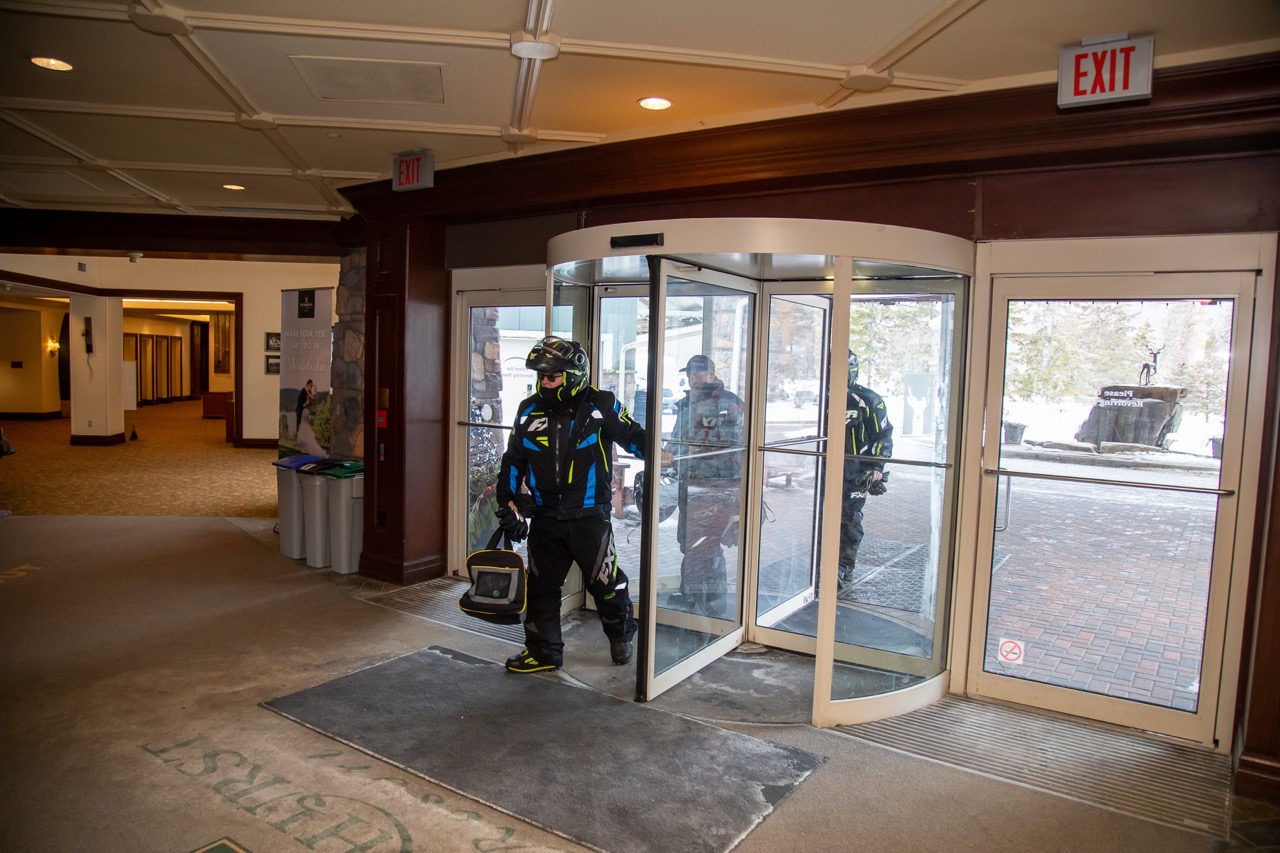
Photo by Martin Lortz
Where Will We Stay?
Before booking your overnight stay (if that’s even possible), you should ask what health & safety protocols are in place for both staff and guests. Make certain they fall within your comfort zone. Also, find out what facilities at the lodgings are open or have restricted access, such as proof of residency requirements to prevent riders from hot spots from staying over.
It will also be advisable to choose a place with an onsite restaurant open for breakfast and dinner, even if only take-out. Or that has onsite or nearby take out delivery options for in-room dining. It will be handier than ever to book a room with at least a fridge and microwave, if not a complete kitchen to prepare your own meals.
At breakfast, you may also want to order a bag lunch from the restaurant for the trail. Or bring your own breakfast and trail snack supplies. But will the onsite restaurant have capacity or opening limitations? If so, you may have to make meal reservations and plan for longer eating times.

Photo © by Craig Nicholson
For multi-night stays, I’d recommend requesting no maid service during your stay. This way, you (and your roommate) will be the only one(s) to enter. Regardless, you may want to bring your own sanitizing tools to clean high touch surfaces regularly. And to sanitize your hands each time before entering your room to keep it a safe zone.
What About Doubling Up?
And what about roommates? Will you be comfortable rooming with just anybody? If not, are you willing to pay for your own room (and put a similar cost on the person who would have been your roomie)? This is another advantage of forming a riding bubble with pre-assigned room sharing within your group.
Where Will We Get Gas?
We can’t assume that all the usual gas stations will still be open. Or operating the same hours as before. Some local stations don’t have pay at the pump. Who knows? In some remote areas, there could even be some fuel delivery delays causing temporary shortages. So my best advice is to always start each ride with a full tank and top up at every opportunity. Plus, every sled should carry a full container of extra gas just in case. I know this may sound like overkill. But as they say, better to be looking at it than for it!
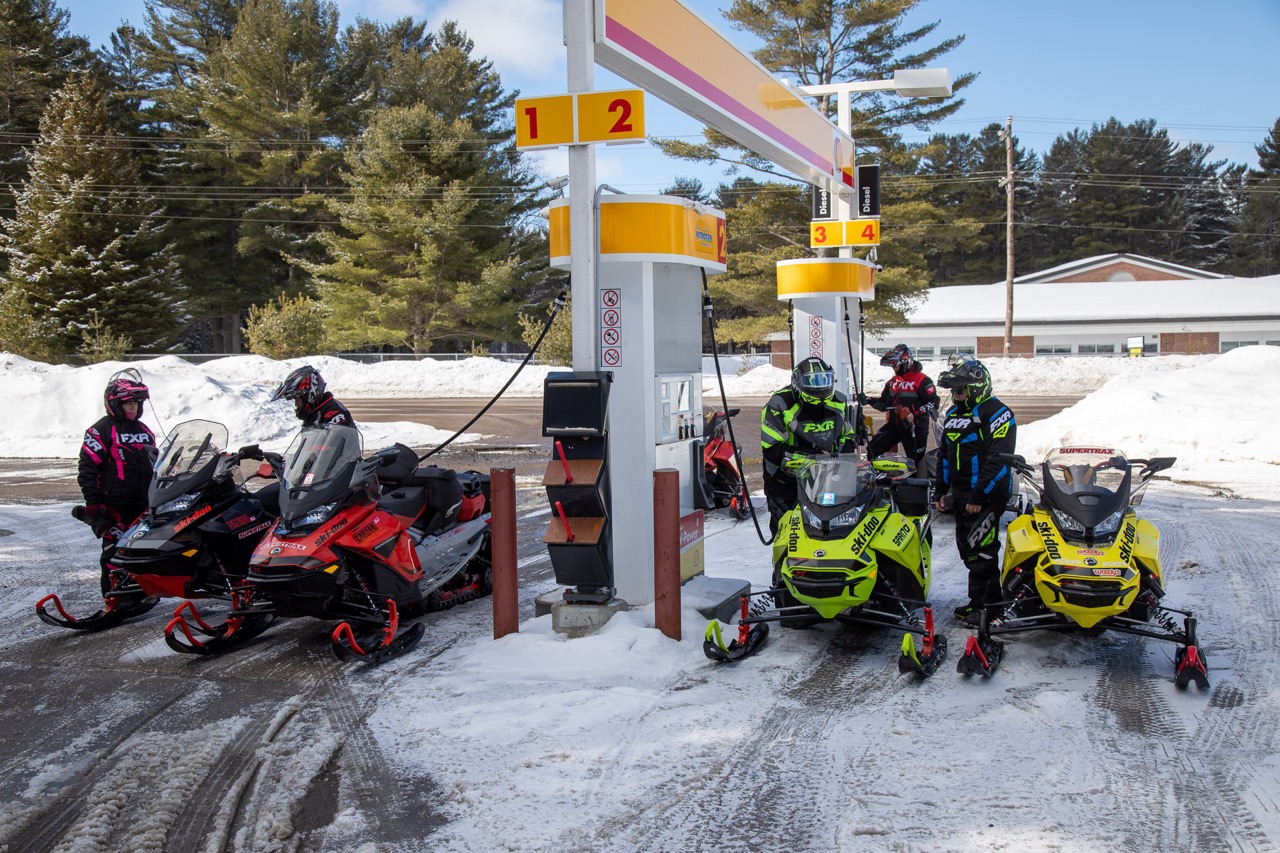
Photo by Martin Lortz
What Will We Do For Lunch?
When it comes to lunch, consider that many restaurants, clubhouses and relays may be closed. Others may have limited capacity with line ups at peak times. Some may even have proof of residency requirements to keep hot spot visitors out. Do you need to make advance reservations? Should you plan restaurant stops at off-peak times? Is it’s going to take longer to eat, should you consider arranging a group order? If you arrive and place one order for soup of the day & grilled cheese for everyone, you’ll get served faster!
Meanwhile, many eateries have never had adequate space for the snowmobile gear we take off for lunch. With capacity restrictions, this could be even more of a hassle if some areas inside are shut off to customers. To say nothing of trying to ensure that your gear doesn’t pick up germs from inadequate surface cleaning. Or from where some previous customer’s snot-covered balaclava or helmet breath deflector was lying!
Trailside hospitality providers are also asking themselves tough questions. Here’s a good example from a November 1st post by Relais La Chapel in Monts Valin, Quebec. “Sincerely, we ask ourselves the following questions if we are closed:
- Where will snowmobilers go to the toilet?
- Where will they warm up?
- What help will they get if they are lost?
- Where will they get gas?
- And… If we open for take out: Where will they eat?”
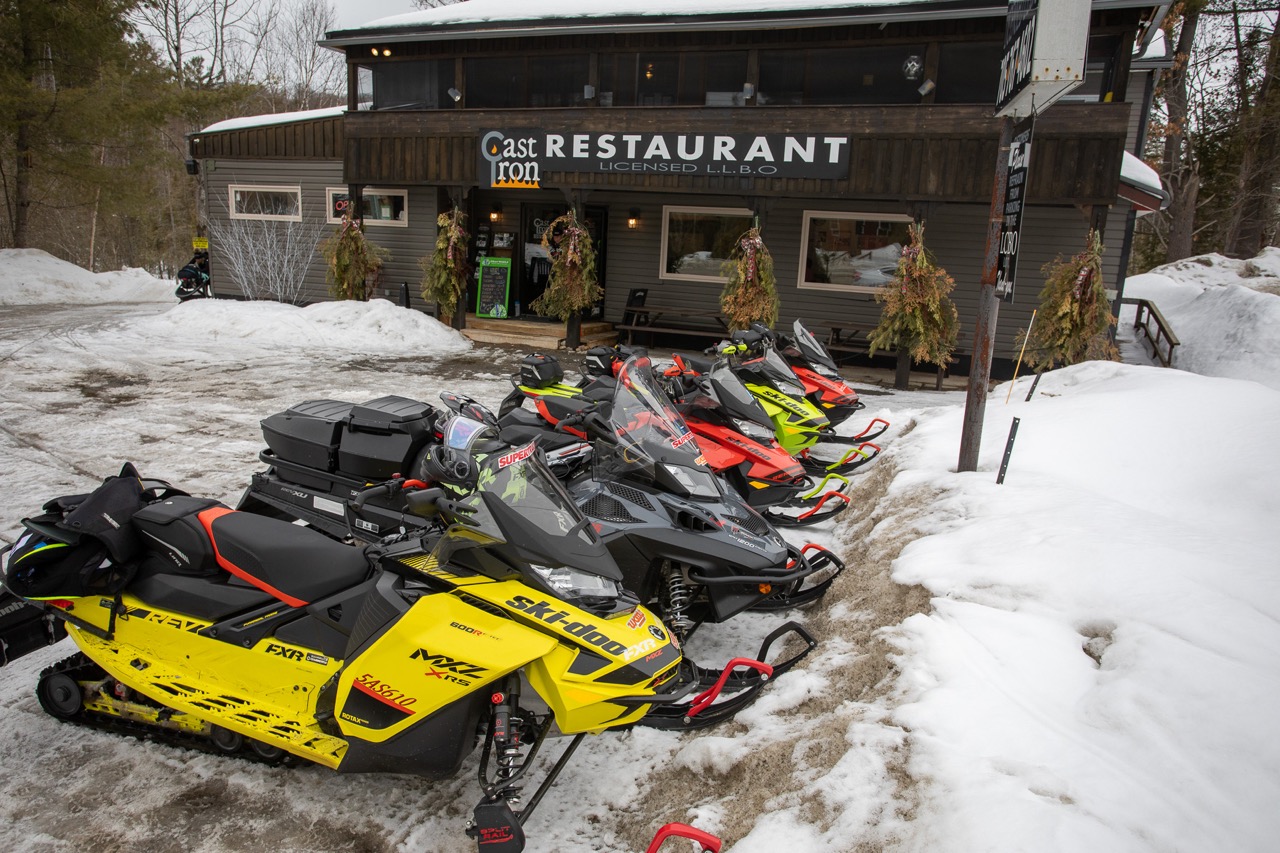
Photo by Martin Lortz
Take It With You
All in all, a trailside lunch stop has many advantages. Besides being less risky, it can also be faster, cheaper and more convenient. With proper preparations, you can carry a hot meal like soup, stew or chilli. Or bring fire starter tools to build a fire to roast hot dogs and warm up. Maybe get a hot pan or muff pot for your muffler. If you can still find one, check out these tips and recipes!
But if you do eat outdoors, please make arrangements in advance to take your rubbish out with you in a sealable plastic bag. The last problem clubs need is for the trails to be littered with garbage!
Where Will We Stop?
Speaking of stopping, whenever you interact with others remember to back off the proper six feet for physical distancing. Whenever physical distancing isn’t possible or you’re indoors, wear your face mask, especially around strangers. Carry hand sanitizer in your pocket to wash your hands frequently. Sounds familiar, eh? Check out the Ride Smart tips from the OFSC.
Other 2021 Snowmobile Trail Riding Considerations
Staying Warm
Several other considerations come to mind. With access to indoor services possibly being limited, the first is staying warm. How often have you stopped for a coffee or hot chocolate on a frigid day to take the chill off? That may not be as easy this winter. So, be more careful about what you wear for riding and err on the side of heat. This is especially important while riding with children.
One secret to keeping warm is to ensure your hands and feet are comfy. So wear the warmest boots and gloves you can find. Like my deep freeze rated Baffin boots and FXR Heated Recon Gloves. Also, it’s time to bring out the handlebar muffs and heavy socks. And crank up the heated handlebars. Plus, carry extra layers and chemical warmers just in case. Eat hearty breakfasts to boost your bod’s internal heating ability. And snack often enough to keep your internal furnace well stoked. Click here for more stay warm tips!
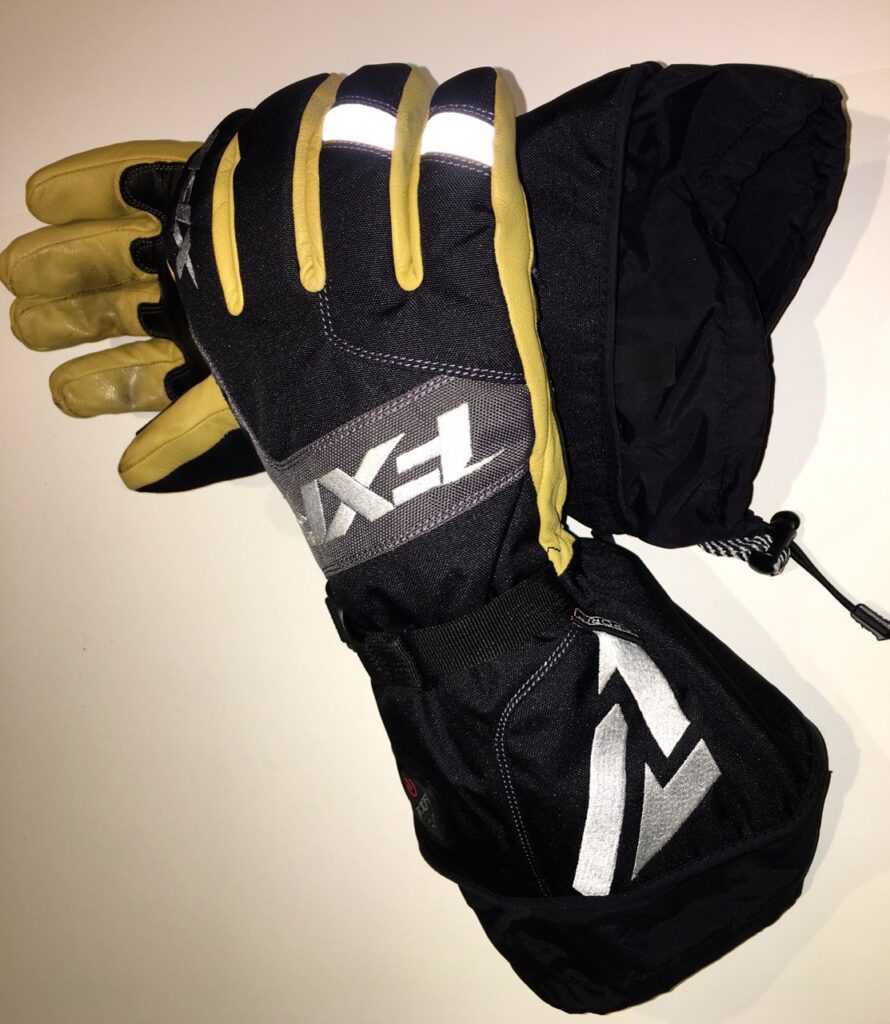
FXR Heated Recon Gloves Photo © by Craig Nicholson
Taking A Pee…and More!
Speaking of limited services, what are you going to do about restrooms? Washroom breaks are an important part of any ride plan, especially for women and children. Sure the guys can whip it out almost anywhere along the trail for a quick leak. But that doesn’t work for everyone or in every instance.
Besides, there’s no guarantee that the usual trailside facilities are going to be available. And even if they are, will they be properly sanitized and supplied? As well, many hospitality services may well restrict use of washrooms to the customers presently inside.
So what’s the plan, Stan? Make sure everyone goes before starting out. Be sure to pause at any available restroom to ask if anyone has to go. And I guess I’m going to be hauling around a supply of my own T.P. this winter!
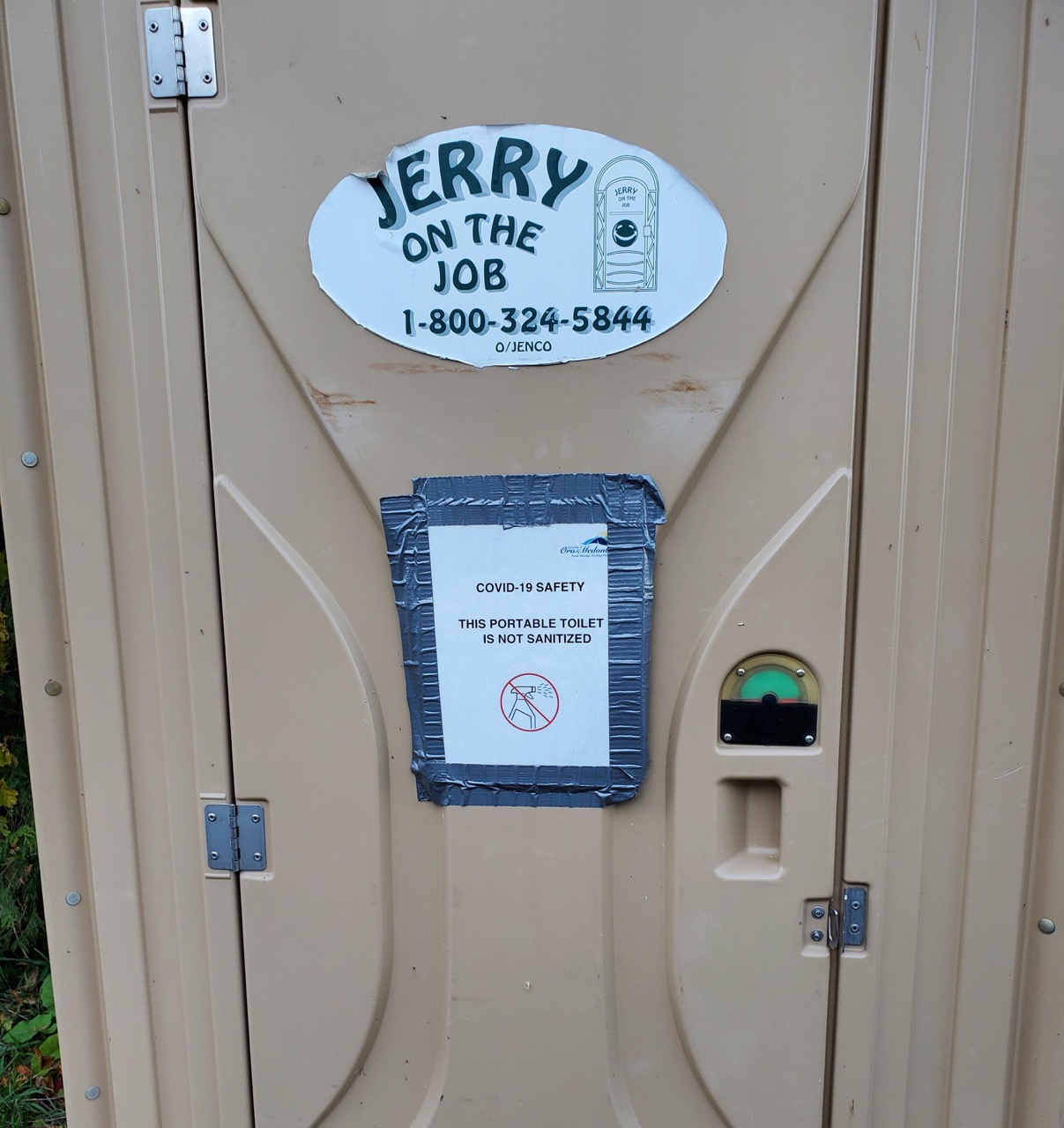
Defrosting Your Visor
Similarly, what are you going to do if your visor frosts up? Ice on the inside of your face shield is tough to eliminate once it takes hold. And the best way I’ve found is to get into a warm place to melt it off. But will that location be readily available when you need it? And if not, what’s your back up plan?
Communicating
With all of these and many other variables confronting us, communication is more important than ever. We need to share our questions, solutions and plans with our companions before and during every ride. Also, letting others know where we’re going, on what route and for how long is more essential than ever. Every ride group should carry emergency communication, tracking and navigation devices in case plans go awry. Both SPOT X and a Globalstar Satellite phone work for me.
My Last Word On 2021 Snowmobile Trail Riding
As you can see, I’m expecting some changes on the trails this season. But perhaps the biggest one is how much trail availability depends on our own personal choices. Snowmobilers come from all over to find the best snow. Many are from the more populated and urban areas where virus risk is highest. What we don’t want to do is to be seen as careless or thoughtless about spreading it to snowbelt communities in rural and northern regions. Or get fined under the Stay At Home order for non essential travel.
So we need to be respectful, prepared and cautious and be part of the solution, not the problem. If we do, we have every chance of having trails to ride all winter. If we don’t, then we shouldn’t be surprised at a negative trail outcome that we could have helped prevent. Yes, being health & safety conscious places an additional burden on each of us. But I’d argue that it’s a small price to pay for the being able to do what we love all winter!
The tips and advice in this blog are the opinions of the author, may not work in every situation and are intended only for the convenience and interest of the reader, who has the personal responsibility to confirm the validity, accuracy and relevancy of this information prior to putting it to their own use.

